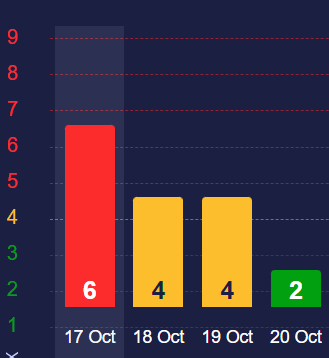A new sunspot is brewing geomagnetic surprises: will the intensity of the storm raging on Earth increase?
Our planet is currently experiencing a strong magnetic storm rated at 6 on the scale. Astrophysicists suggest that its intensity may have increased due to explosions created by a new sunspot. The geomagnetic storms are expected to last until nearly the end of this week.
The new sunspot 3856 has developed a "beta-gamma-delta" magnetic field, which accumulates energy for powerful explosions. This was reported by scientists from the space weather research site Spaceweather.
Forecasters from the National Oceanic and Atmospheric Administration (NOAA) indicate that the likelihood of M-class flares on October 17 is 80%, while X-class flares have a 20% chance.
"The sunspot is directly facing Earth, so any flares will be geo-effective," the scientists concluded.
It is important to note that flares are categorized based on their strength. The smallest are called B-flares, followed by C-flares, then M-flares. The most powerful class of solar flares is X-flares.
Magnetic Storms on Earth: October 16-20
At the same time, according to data from Meteoagent, which provides online forecasts using information from NOAA satellites, TESIS, and international meteorological laboratories worldwide, our planet will be under the influence of magnetic storms rated at 4 and 6 in the coming days.
Currently, on October 17, there is a strong 6-point storm. On October 18-19, its intensity will decrease to a moderate 4-point storm.
The last day of this week is expected to see minimal solar activity.

As a reminder, "Telegraph" previously reported on the weather expected in Ukraine until the end of this week.